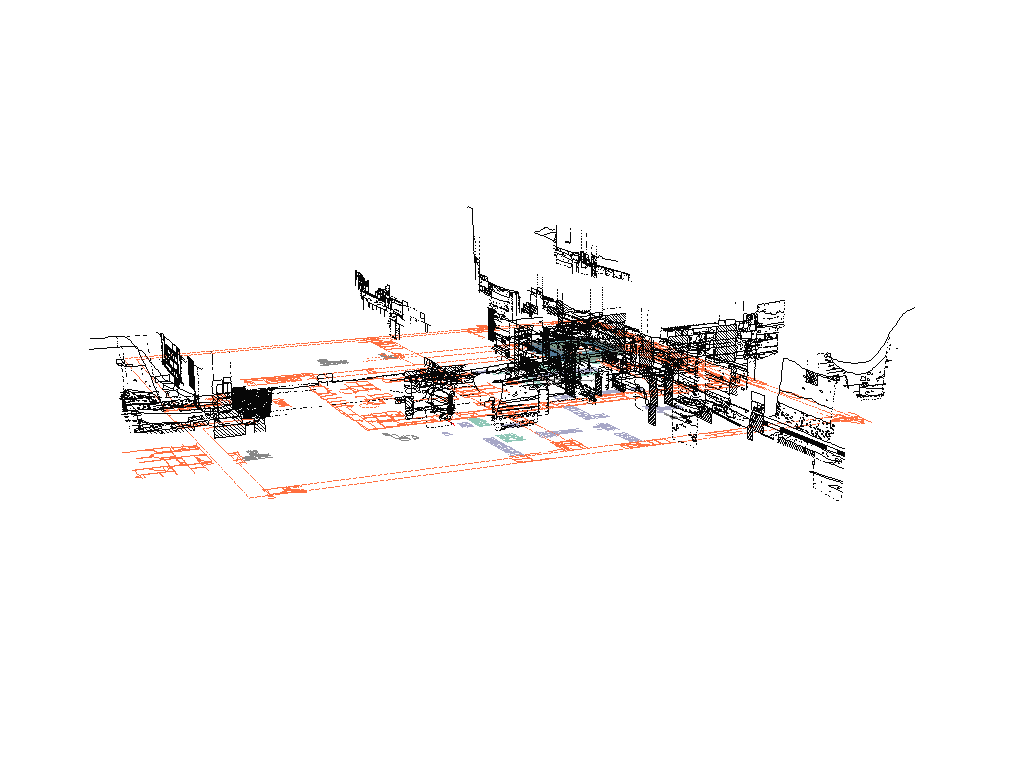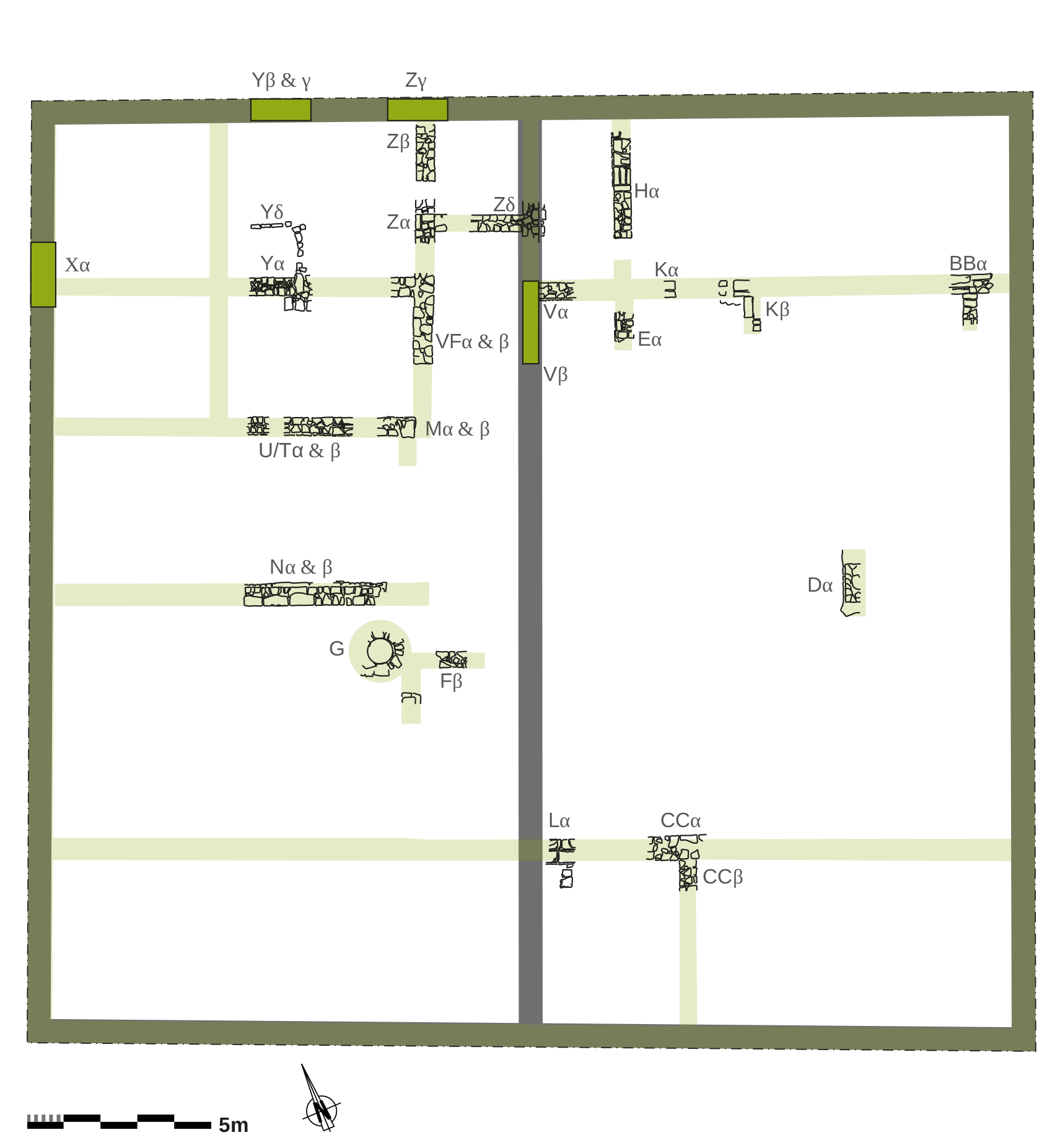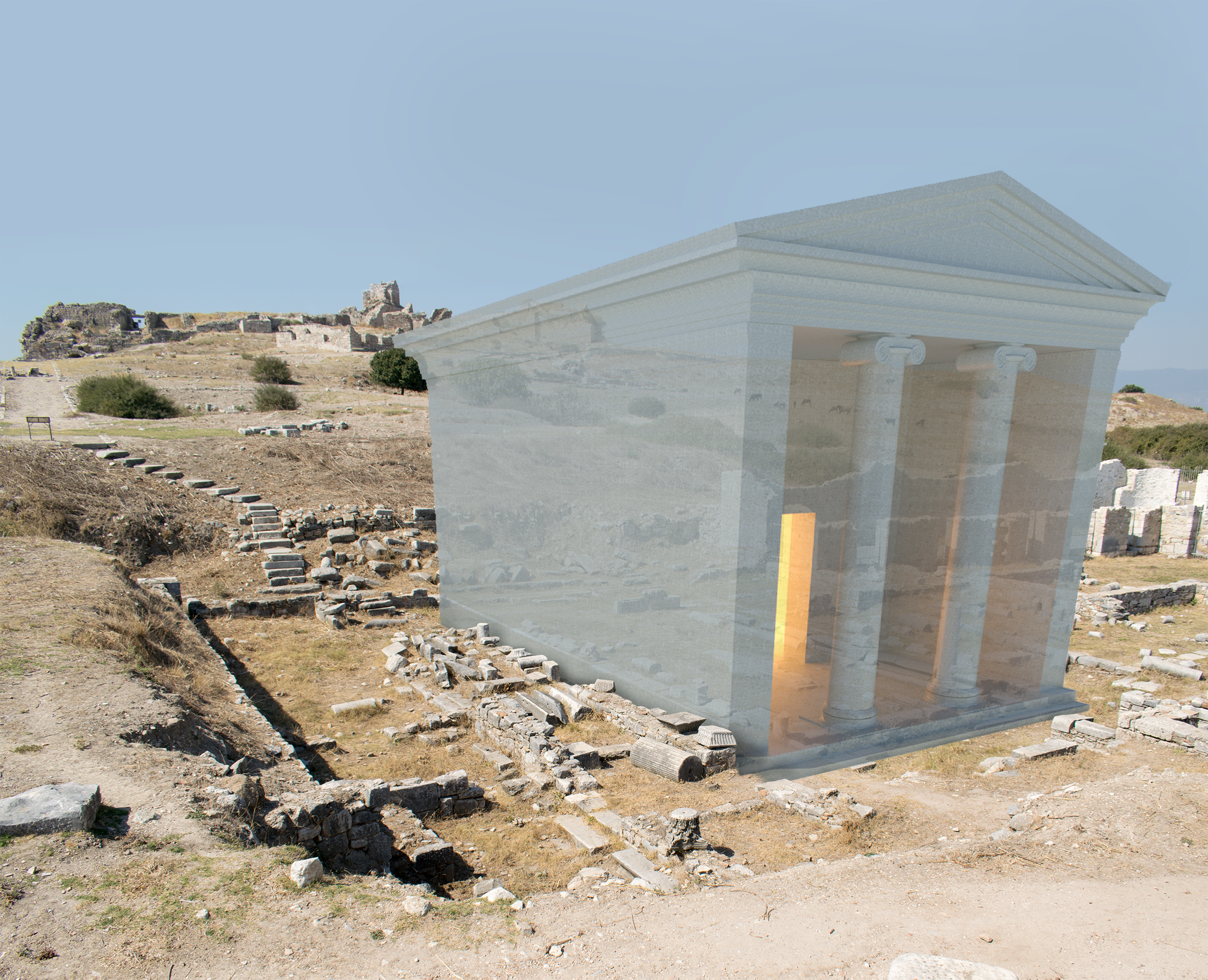The Sanctuary of Dionysus within the Sacral Landscape of Miletus (Gerda Henkel Stiftung)
The Hellenistic Temple of Dionysus is located in the city center of the ancient metropolis Miletus. It covers the southern half of an insula (a rectangular housing block) within the city’s street grid. During the Byzantine period, the area was razed and the Basilica of St. Michael was erected in its stead.
Although more than 100 years have passed since the sanctuaries discovery, a comprehensive evaluation of the excavation results had not been published prior to the completion of this project in 2021. Compared with Wolfgang Müller-Wiener’s previous brief reports the interpretation of the earliest phases has changed significantly with the evaluation of the stratigraphy and finds. The previous dating of the Hellenistic sanctuary of Dionysus has been supported by finds, and the reconstruction is now presented in a detailed and updated form, including all preserved architectural fragments.

Model of the numerous profile drawings and plans in the area of St. Michael Basilica, i.e., the Temple of Dionysus
The earliest structures in the insula can be dated to the late Archaic or early Classical period. In the second half of the fifth century BCE, the alignment of the street grid — represented by the well known buildings from the Hellenistic and Roman Imperial periods as well as the geomagnetic prospection — is attested with the wall 'Oα' in this insula. While not enough of the structures from the two earliest phases remain to form a viable interpretation, the phase 3/4 (ca. turn to the fourth century BCE) provides a better basis. The interconnected walls are strongly resemble a residential building covering a quarter of the entire insula. This is similar to another domestic building discovered near the Temple of Athena in Miletus. Evidence suggests that the eastern quarter of the insula has a mirrored layout. However, fewer trenches were opened here which revealed only a smaller number of foundations. While the numerous recorded finds come largely from filling layers, the composition of some relevant features implies residential use. As part of the project a large quantity of classical pottery finds from Miletus is presented for the first time.

L. Steinmann
Around 276/5 BCE the residential building was demolished, as the temenos of Dionysus with the central naiskos is built in the insula. The pottery finds from a foundation trench now confirm the temple’s dating, that was first assigned based on the name of a stephanefore in the temples founding inscription, the so-called lex sacra. Due to previous excavation activities in the beginning of the 20th century, only a few other finds can be directly linked to the sanctuary itself. The so-called “trash pit” is a notable exception. Its contents testify to cult celebrations in the sanctuary, while there is no evidence of an established votive practice.
The transformation of the domestic buildings in the insula into a sanctuary of Dionysus could be linked to the peculiarities of Dionysian cult practice. Examples of private premises used for Dionysian cult activities or gatherings of cult associations can be found in other poleis as well. It is conceivable that the house already belonged to the leader of a cult association and served as a meeting place for its members. With the growing popularity and increasing openness of the Dionysus cults in the Hellenistic period, it was transformed into a polis-wide sanctuary. The lex sacra still shows the connection between the polis wide and private cult associations. The participants may have purchased the neighboring property to achieve this, or the acquisition may have been sponsored by a Hellenistic ruler seeking to implement a larger Dionysiac cult in Miletus. Current evidence does not favor either of these interpretive approaches, but both offer a good explanation for the change in function. The cult of Dionysus Bakchios in Miletus was a mystery cult. The abovementioned lex sacra and the funerary epigram of the priestess Alkmeonis, make it one of the most discussed cults of Dionysus in the Aegean.

L. Steinmann
In contrast to previous assumptions, the Milesian Temple of Dionysys is not the oldest sanctuary for Dionysus found in Asia Minor. This hypothesis, postulated by previous reports on the basis of assumed cult continuity at the site, could not be substantiated. Nonetheless, epigraphic evidence strongly suggests that a pre-Hellenistic cult of Dionysus in Miletus had existed, but it may not have had a sanctuary. The construction of this temenos in the early third century BCE fits perfectly into the spirit of the time, as the Dionysus cults gained greater popularity during the Hellenist period and many temples and sanctuaries were first built or founded in this period, while earlier cult activity was often ephemeral and thus left no archaeological evidence. Furthermore, in the context of the history of the city of Miletus and its cult topography, this course of events fits better with other urbanistic developments. Countless examples and particularly the distribution of finds prove that the northern area of the city was less developed in the archaic period. The “old” sanctuaries, including the Temple of Aphrodite on Zeytintepe, the Temple of Artemis on Kalabaktepe, and the Temple of Athena at the Theater Harbor, were neither completely abandoned after the destruction of Miletus by the Persians 494 BCE, nor further developed by means of larger structures. This observation fits with the oath of the Ionians, which is later recorded in Isocrates, by which it is said that they decided not to rebuild the sanctuaries destroyed by the Persians (Isocrates or. 4.156).
After this decisive event, which, according to Herodotus, left Miletus "empty of Milesians", (Herodotus 6.22), urban development changed significantly. Building activities and the establishment of sanctuaries focused on the northern part of the city, particularly the area around the large avenue, which is clearly revealed as the political center. The insula of the Temple of Dionysus is located in the vicinity of the avenue; its construction history is an exact impressive illustration of this development. Although there was no evidence of a sanctuary before the fifth century BCE, the Temple of Demeter on Humeitepe and the naiskos in the Temple of Dionysus, provide two comparable and richly decorated naiskoi which were erected at the beginning of the third century BCE in honor of deities who had hardly been represented in Miletus before. The sacral landscape is also emblematic of the fundamental changes to the City of Miletus from the classical and Hellenistic periods as compared with the Miletus of the archaic period.
Articles and lectures inspired by the project
- Das Dionysosheiligtum in der Sakrallandschaft von Milet, Poster am Research Day der Ruhr-Universität Bochum (2 May 2018, View / Download)
- A little suffering is good for the soul, Serie von vier Artikeln in L.I.S.A (Blog der Gerda Henkel Stiftung), Link to Part 1 (25 May–15 June 2019).
- The sanctuary of Dionysos in Miletus: the excavation of the ‘70s revisited (13 September 2019). Lecture at the Conference Sanctuaries and Cults in the Aegean from Early Historic Times to Late Antiquity (Ephorate of Antiquities of Lesbos)
- Ch. Berns – L. Steinmann, Milet: Kamusal Mekân Üzerine Güncel Araştırmalar (18 May 2021, YouTube, arkeolojihaber). Lecture at the Symposium İonia’da Yeni Arkeolojik Araştırmalar (Ege Üniversitesi, Izmir).
- Finds from Miletus XXXII: Clay Rings from the Sanctuary of Dionysos in Miletus, Archäologischer Anzeiger 2020/1, 2020, 93–119, doi:10.34780/aa.v0i1.1014.
- L. Steinmann, Das Dionysosheiligtum in der Sakrallandschaft von Milet (Dissertation Universität Hamburg 2023)
Project details
- Duration: 2017–2020
- Project lead: Lisa Steinmann
- Sponsor: Gerda Henkel Foundation